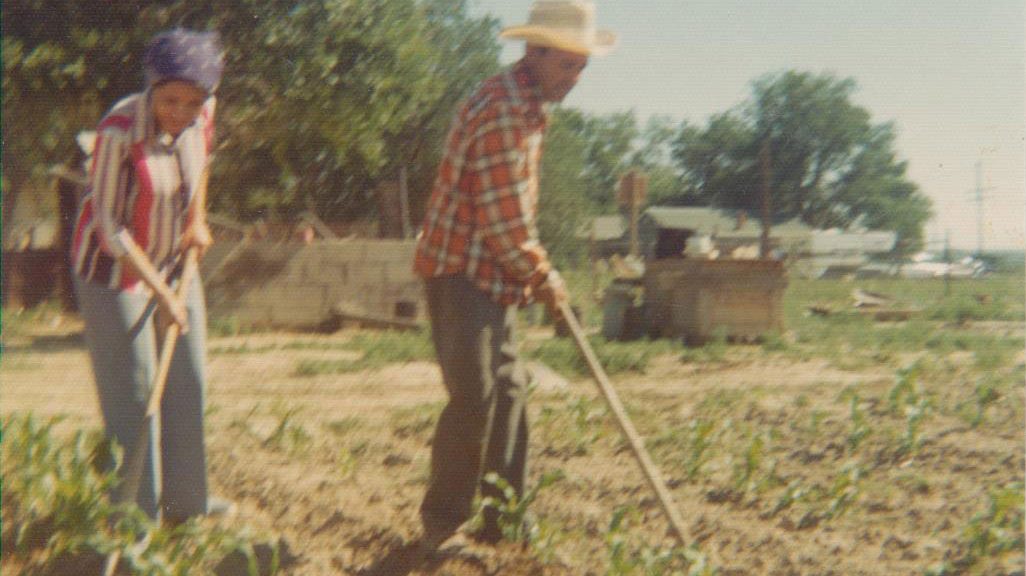
Fermin Valdez: Memories of Costilla
On a hot summer day in 1962, my dad, Fermin Valdez, and I were hoeing our sweet corn field. With temperatures climbing over 90 degrees, my dad said, “Hijito vamos pal alamo a descansar y beber agua, esta muy caliente.” As we walked to the tall cottonwood, he said, “Let’s sit over here in the shade.”
We sat on a bench, wiped the dripping sweat from our faces and necks, then he took a drink of water from his thermos and handed it to me. Earlier that morning before we started work, I had set the bench and thermos in the shade at the base of the tall tree. Once we got our wind back, I asked, “Dad, where did you learn to work so fast and so good? You don’t leave any weeds!”
The answer to this question provoked him to tell me a long story of which I had never heard.
“Hijito,” he said, “te voy a decir algo y espero que no lo olvides.” Now dad spoke mostly in Spanish and would sprinkle a few English words and in his conversation he would mix some “Spanglish.” He proceeded, “Aprendí a trabajar y ser buen esposo de tu grandpo Nacho (Jose Ignacio Valdez) y de tu grandma, (Beatríz Arellano) aprendí a rezar, cocinar, y auydar la familia. I was the third oldest after your tío Manuel and tío Flavio.” My dad continued, “In the 1920’s your grandpo had over 1000 head of sheep so it was up to us three boys to care for them. Your grandpo had only one sister, Maclovia. You see, their mother, Cecilia Santistevan died when Maclovia was a year old. So, it was up to their father, Francisco Antonio Valdez to raise them. But from the beginning, papá Kiko had difficulty with this responsibility. Living nearby was your grandpo’s tío Román Santistevan who was the older brother of Cecilia. Since 1895, mí tío Román and his wife, mí tía Sista chose to raise your grandpo and Maclovia because papá Kiko was gone most of the time. Your grandpo would tell us that papa Kiko was seldom home, he was a musician, played the violin in a band at various events in Costilla and throughout the San Luis Valley. Mí tío Román was grandpo Nacho’s father figure who provided for him and Maclovia in many ways including paying for grandpo’s education. I remember your grandpo Nacho telling me that around 1911, his tío Román gave him a lot of sheep. My dad worked for his tío Román since he was a little boy, mostly around sheep. So, your grandpo Nacho learned the sheep business very well and made money. In fact, in the 1920’s he was one of the first men in Costilla to own a car, it was a Whippet (made by Willys).
“In 1907, mí tío Román enrolled your grandpo at the Menual School in Albuquerque. That year there were five boys from Costilla including your grandpo, the others were mano Celedonio “C.C.” Trujillo, mí tío Almindro Santistevan and two others. Your grandpo Nacho was a very smart man, he was able to read and write in both Spanish and English, and when it came to math, he was very smart.
The Death and Funeral of Tio Román
“You remember that I was born in 1918 right? So, I was very young when papá Kiko died, I don’t remember him or when he died. But, I do remember when mí tío Román passed away in the fall of 1934. I was 16 or 17, your tío Manuel was 20 and your tío Flavio was 18. At this time, there were already 12 kids in our family and two more would be born in the next 4 years. It was a sad day in our house when mí tío died, I remember my dad crying for several days. During this time, we could not play or run around; all we did was work, your grandpo grieved for his tío for several weeks. I remember that your grandpo and grandma would lead us in prayers after dinner, praying for tío Román, the souls of their parents, two of our sisters, and a brother who had passed away a few years earlier; we also prayed for “difuntos.” I remember the funeral, it was a sad day. The day was cloudy and cold, which made for a long walk from alla arriba to the church, El Sagrado Corazon de Costilla. The funeral mass was beautiful. It was in Latin, it was long with lots of singing and a lot of crying. After mass, the coffin was loaded on a wagon pulled by a horse and taken to the cemetery which was a short distance from the church. We all walked behind the wagon as the driver managed it to the grave. All along the way people sang and cried. Mí tío Román was a well respected man in Costilla. He was born in 1856 in Arroyo Hondo, married in 1883 in Costilla to Maria Sista de Jesus Lucero. At another time, I will have to tell you about her, it is said that she was part indian. Mí tío Roman and Sista had 12 kids. Sista died in 1918, maybe possibly of the Spanish Flu. He then married again in 1919 and had 5 more kids. Mí tío Román was tall, handsome and very respected, people looked up to him for consejos.”
Growing Up Sheepherder
“Your grandpo Nacho taught us how to work with the sheep, how to live with them, how to take care of them. He taught us how to drive the sheep to the monte and how to manage them. My brothers and I and our dog Chief would stay with them for up to seven days in the monte. Our home away from home was the sheepherder wagon where we cooked and slept. Every three or four days, my dad would check up on us, bring us more food and talk. Sometimes, he would take us fishing in the Costilla River or other ritos. Of course not all three of us would go with him someone had to stay with the sheep. There were times when he would stay with us overnight. Your tíos and I enjoyed those days, we tried very hard to do a good job and to impress our dad. After six or seven days, my dad would bring a man who would stay with the sheep while we went back to our house in Costilla.”
I asked my dad, “Didn’t you go to school during this time?”
The CCC and Surviving the Great Depression (1935-1937)
He said, “I went to school up to the 6th grade (1931) when your grandpo pulled us three older boys from school in order to take care of the sheep, we never finished school. So, you see, my brothers and I had to grow up as young boys, we were responsible for the welfare of these animals. They were my dad’s investments. In many ways they fed us. The sheep helped us survive the Great Depression.
“I learned a lot about myself from working with the sheep and that would contribute to my development, especially in the next chapter of my life. In 1933, President Roosevelt started the CCC (Civilian Conservation Corps).”
I asked my dad, “What was CCC?”
He replied, “Well hijito, America was in trouble in the 1920’s and 30’s with the Great Depression and the Dust Bowl. Throughout the United States, people were not working and companies went out of business. So the President started this program in order to get young men and boys back to work. All CCC men were paid $30 a month but they had to send $22-25 dollars home to help out their families.”
“So, did you go to CCC, dad?”
“I did. I left mí mamá and papá in the summer of 1935 and returned to Costilla in 1937.”
“What kind of work did you do?” I asked.
“Well, the CCC did a lot of projects, mostly outdoors. The CCC camps were run like the U.S. Army. We had to go to basic training where they taught us much of what they teach young recruits in the Army like discipline, marching, working together, how to eat, how to dress. We also learned how to work with different tools and machines.”
“Did you do projects in Costilla?” I asked.
“No, I was sent to a camp about 30 miles north west of Albuquerque, New Mexico. Our group was assigned to build flood prevention projects.”
“What about tío Manuel and tío Flavio? Where did they go?”
“They went to other places, also in New Mexico.”
“Dad, did you send your monthly checks to grandpo and grandma?”
“Yes, that was one of the requirements of being in the CCC. I would only keep $5 a month and send the rest to my parents. Life was hard during the 20s and 30s. Even though we had a lot of sheep, there were 14 kids in our family so there were lots of mouths to feed and people to clothe. While your tíos and I were away at CCC camps, your grandpo had to hire men to work the sheep and the farm since he had no help. The next brother was your uncle Bert but he was only 4. He could only help your grandpo around the yard and with the pigs and chickens.
“I liked being in the CCC, I learned a lot and most of all I liked working outside with other boys my age. I got to know boys from all over the state of New Mexico. I made friends with so many, but there were these two ‘campers’ from Albuquerque who I liked. Their parents would send “goodies” to them and they would share with me.
Weaving and Canning with the WPA
“The federal government had other programs like the WPA. Your grandma Beatríz was involved in a WPA program, it was called the Costilla Weaving Project.” My dad asked me, “Do you remember me telling you about the WPA?”
I said, “No.”
He continued,” It was another government program to help people get back to work, to make money for their families. Well, with the help of this program, many ladies in Costilla became involved in several things. Some, like your grandma Beatríz, my tía Ramoncita and others became weavers. Your grandma learned how to work the ‘telar’, the weaving loom and how to make rugs, jackets, vests and other clothes. I remember mí mamá being so happy with herself! She was so proud of her projects. Her rugs were throughout our house.”
I asked dad, “Where did she take these classes?”
He said, “Remember the plaza de arriba and the tall building there?”
I said,” I do.”
“Well, that is the SPMDTU building where the weaving classes were held along with other classes, such as canning.” My dad continued, “Your grandma has pictures of her and her sister Ramoncita working the loom. One day, I’ll ask your grandma to show you. You will be proud of her.” Then my dad added, “You know that your mom’s mom, your grandma Rebeca also took classes during this time at the SPMDTU. She took classes to learn how to can vegetables and meats.”
Tears of Joy and the First Big Hug: Return to Costilla In 1937
“How long were you in the CCC, dad?”
“I was in for 1 year and 8 months. So, I returned to Costilla in the Spring of 1937. I remember the long ride home from Albuquerque. I took a bus to Taos and at Taos we boarded another bus just for CCC boys to take us home. As the bus traveled north from Taos, its first stop was at Arroyo Hondo. At the bus stop, there were happy families and community people to greet the CCC boys. The next stop was at Questa, and like at Arroyo Hondo, there were a lot of cheering community people there to greet the boys. The next stop was Cerro. Again there were happy and loud families there to greet their boys. When the bus left Cerro, my heart began to pound real hard, because I knew home was just a few miles away. The closer we got to Costilla, I began to sweat and get nervous. By this time there were only 11 boys left on the bus. As we got closer, we hollered and cheered and some boys began to cry. And sure enough, as we got closer to Costilla we could see a lot of our families at the estafet’ de mano Lino Trujillo. The post office was the bus stop in Costilla. As the bus doors opened we ran off bus and jumped to the waiting arms of our families and friends. I remember your grandma, she was so emotional and cried when I got to her, and your grandpo, who was not usually very emotional, gave me the first of three of the biggest hugs in my life.
A few weeks later your tío Manuel came home and then your tío Flavio. Finally, the three of us were back home and ready to continue our lives in Costilla, with our brothers and sisters and mamá and papá. And yes with all of our sheep.
News from Grandpo Nacho’s Radio: The World at War
“While we were away, your grandpo Nacho had to sell sheep in order to keep food on the table for our big family, so when we came back there were only about 500 sheep left. We worked hard to make the flock grow. Little did we know that this happy time would only last for a couple of years, hijito.”
“Why do you say that, dad?”
“When we went to the CCC camps in 1937, Germany was getting ready for World War II. In September of 1939, the German Army invaded Poland, and then Czechoslovakia. In early 1940, they invaded France. In September of 1940, the German Army began bombing England. Hitler, the German dictator wanted to take over all of Europe. Not very many people in Costilla had radios at this time, but your grandpo Nacho did. You remember where we lived?” Dad interjected.
“Yes,” I replied, “near the plaza de arriba right?”
My dad continued his story, “In the evenings, our neighbors would come over to hear the news of what was going on in Europe, which was not good. Well, there wasn’t much we could do, so your tíos and I continued to work the farm and our sheep.”
At this point, my dad said, “Well, hijito, it’s time to get back to work.”
I said to him, “But dad what about World War II?”
He said, “I’ll tell you more later.”
And with that, I waited until the next day when we took our morning break under the alamo. In the meantime, we went back out to the field, and hoed the corn for a couple hours and then took a break for lunch. That afternoon, we continued hoeing and did a few more rows of corn. The next day we would finish hoeing the corn. This was the second “hoeing” for the season. I knew that there would be at least two more times in which we would have to hoe the corn, once in July and another in early August. The next day, my dad and I started early before the day got too hot. When we took our mid-morning break under the alamo I asked him if he would continue the stories from yesterday.
He declined and said, “Maybe tomorrow.”
I knew better than to pester him, so I said nothing and left him to his thoughts. We put on our hats, picked up the hoes and went out to finish. That afternoon we finished the corn–was I happy! I said to myself, “Maybe we can take a day off before we start on the cantaloupes and watermelons.”
World War II Comes to Costilla (1941-1945)
Sure enough, two days later, in the early morning, we started on the cantaloupes. My dad was a quiet worker, he didn’t like to talk when he worked. He was always focused and probably lost in his thoughts. But, I thought to myself, “Will he continue the WWII stories from the other day? How do I ask him, without getting him mad?”
Well, we took a break again in the mid-morning. Again, we sat in our shady spot, wiped the sweat from our heads and necks and drank water. After I finished drinking, I got up my nerve to ask him, “Dad, can you please tell me more about yourself during WWII?”
It took him awhile before he said, “Where do you want me to start?”
I said, “Well, the other day you were about to tell me when WWII started.”
“In December, 1941, the Japanese attacked the U.S. Navy in Hawaii. They dropped a lot of bombs destroyed a lot of ships and killed a lot of sailors. The world was at war. In Europe, the German army invaded several countries including Russia. In the Pacific, the Japanese army invaded China the Philippine Islands and several other islands. Hitler wanted to take over the world.
“In Costilla, my brothers, cousins and friends, we knew that we would have to go into the Army to fight these dictators. So, in January of 1942, the draft office in Taos County opened and began calling all eligible young men. From our family your tío Manuel was called first, then your tío Flavio, then it was me. Your grandma Beatríz has a picture of the three of us in our uniforms, I’ll have to show it to you. Many of my cousins were also called, like Julian Quintana, Clor Quintana, Armando “Chief” Trujillo, Conrado Quintana, Valdamar DeHerrera, Gustavo Santistevan and others.
It was a sad time for our mothers but we knew we had to go and fight. Like so many young men from throughout the country, we were convinced that we had to serve and protect our people, our country. So, less than two years after our return from the CCC camps we left home again. Many of us who had participated in the CCC were ready, we had already done some basic training. I think that helped me get through Basic. Your grandma and grandpo, like so many families, were so sad to see us go because they didn’t know if we would ever come back. Some men from Costilla fought in Europe but most of us went to fight in the Pacific against the Japanese. Your tío Manuel saw a lot of action and was even shot in the battle of Okinawa where he received a Purple Heart. Some of my cousins were taken prisoners of war by the Japanese like Armando”Chief” Trujillo, Valdamar DeHerrera and Gustavo Santistevan. Many soldiers were killed like my cousin Julian Quintana who was killed in Belgium and is buried there; also, your mom’s cousin Arturo Santistevan, a sailor who was killed aboard his ship.
More Tears of Joy and the Second Big Hug: The Soldiers Return (1945)
“I won’t tell you too much about the war, but I will tell you more about life after the war in Costilla. I was discharged in California and took the train to Albuquerque. On the bus ride from Albuquerque to Costilla, I was reminded of my trip from the CCC camps. When we passed Questa, I was so happy that I cried all the way home. And again, the bus pulled up the post office de “mano” Lino Trujillo. When the bus driver opened the doors, I got down and kissed the ground and then I kissed mí mamá. Mí papá gave me the 2nd biggest hug; my other brothers and sisters were there to welcome me home.
There were other soldiers on the bus and they were greeted by their families, it was a joyous time in Costilla. As we approached the house, I saw a flag with three blue stars hanging in the window. Hijito, those stars represented the three of us who had gone to war. In fact, there were many flags in the windows of homes in Costilla; so many young men had gone to war. Many came home, others did not.
A Proud American in 1945
“When the war was over in 1945, Costilla was alive once again, it was a good place to raise a family. People were happy, soldiers were marrying Costilla girls.”
I had to interject, “Like you and mom?”
“Yes, we got married in July of 1945, your tío Manuel got married a few months later. Your tío Flavio never got married. The Costilla priest was busy performing marriages and baptisms. Soon after we got married, your mom and I decided to build our own house out of adobes on a lot which your grandpo had given us. He also gave me five acres to farm. He gave my two older brother five acres each to farm and your tio Manuel also got a lot to build his home. Our home had two bedrooms, with a front room and a kitchen. Your mom was a strong woman and a good helper. She helped make the adobes and helped me raise the walls. It took over two months to make the adobes and another six months to build the house. I had to go up the monte to get logs to make vigas and latillas for the ceiling and roof. When the house was finished, your mom and I were so proud of our project! The house was finished in October of 1946. I was so busy at that time. You see, the government provided vocational classes for the Costilla veterans. Mr. Tafoya, a shop teacher at the high school, taught us veterans many skills including how to do woodworking. There must have been over 100 veterans who were enrolled in these classes. Some classes met in the evening and others at night. I chose to go to school at night because I was working on both the house and farming during the day.”
I asked dad, “What did you make?”
“Hijito,” he said, “the pieces I made are at home: the night stands, chest and clothes closet in our bedroom. The foot stool in your room, I made that too.”
“Did you learn to build houses too?” I asked.
“Yes, our class built houses for disabled veterans, we also added rooms to the house where the nuns lived and to the elementary school we added classrooms. So, we made contributions to the town of Costilla. Mr. Tafoya and his wife were very nice to all of us, they lived in the plaza de abajo near the high school. Your great grandma Francisquita Barela, your mom’s grandma was their neighbor. So, my life was a happy one, I was married to a very good woman, your mom. Our house was finished, I was farming the five acres and I was going to school. I was a proud American, a World War II veteran.
A New Life (1947 – 1949)
“Hijito you were born the next year, in 1947. You were our first child, a boy, and I was so happy. Your birth was the third time that mí Papá gave me a big hug, he was so proud that his first two grandchildren were boys, you and your cousin Martin. Your mom and I, we both loved our fathers so we gave you their first names. But your first name is Daniel; I named you after a good friend in the Army, your second name, Juan is your mom’s dad’s first name and your third name, Ignacio is my dad’s name.
“In 1947 my first year of farming, my five acres produced a nice crop of pinto beans. During the winter, your mom and I talked about buying more property to farm, I knew that I wanted to be the best farmer in Costilla with the best harvest. So, I met with the president of the Rio Costilla Cooperative Livestock Association to see if the asociación would sell me some property. After several meetings the board agreed to lease me two 80 acres in the llano which included water rights for the planting season of 1948. They agreed to lease two 80 acres in the llano with water rights. They also agreed to sell the property to me at the end of the second year. I was so happy to tell your mom that the board had agreed. It was a dream come true.
So in the Spring of 1948, I started to farm. I had money to buy equipment, seeds and lumber to build sheds for my equipment. My hard work paid off, the harvest was very profitable. I saved some money for the next year and put some of it away to buy the property. The Spring of 1949 came around and I continued to farm. It was hard work but I enjoyed it. I loved working the land with my own hands and sweat. I was doing what my Arellano ancestors, grandparents, great-grandparents and great-great grandparents of mí mamá were doing when they founded Costilla in the late 1850’s.
A Major Setback (1949)
“The harvest season of 1949 was also a success. Finally, I had saved enough money to buy the property.” My dad then said, “I’ll never forget what happened next”. He said, I asked the board of the Rio Costilla Cooperative Livestock Association (RCCLA) for a meeting to discuss the purchase of the property. I was told that they would meet with me the following Wednesday at 7:00 p.m. Before the meeting, I asked mí papá, a Rio Costilla Cooperative Livestock Association member, if he wanted to go with me to this important meeting and he agreed.”
At this point my dad’s voice was shaking, he began to choke up. I asked him if he was okay, that we could talk another time.
He calmed down and continued, “Well, we went to the meeting, it started pretty good and then it happened. The worst news I would ever get in my life. The RCCLA board went back on the agreement which we had made two years earlier. Mí papá and I argued our points but they would not budge. Finally, they asked me to produce proof of such an agreement, I did not have any paperwork. It was a gentleman’s agreement, so I thought. We left the meeting and mí papá was very good to me, he tried to calm me down. When we got to his house, he asked me inside and I said, “Gracias but, I need to go home to my family.”
“When I walked into our house, your mother could see how upset I was, she asked, ‘What’s wrong?’”
“I gave her the bad news and she cried. You were just a year and half old when this happened. When I saw you and your mom, I calmed down. I thought, ‘You’re my family and I promised that I would take care of both of you.’ I could not sleep that night, all I did was think, ‘What am I going to do now?’” The next day your mom and I talked some more, then I went to get some consejos from your grandma Beatríz.
In Search of Jobs: The Migration from Costilla (1948-1951)
“The years of 1948-1949 saw a lot of veterans move from Costilla in search of jobs. Costilla was an agricultural community, but it had limitations. Families moved to Taos, Santa Fe, and Albuquerque, New Mexico. Others moved to various places in Colorado, some went to Utah, Wyoming, and others went to California. So, in 1950, your mom and I decided to move. It was by the grace of God which brought us to Avondale, Colorado. This property had what we were looking for, it was a farming community, it had good soil and plenty of water. Also, there were a lot of people from Costilla. This property was for sale, but I didn’t have enough money to buy it, so I got a job at the railroad and worked there for a year. The following year, 1951, I bought these five acres. I also had a new job. The Korean War had just started and the Pueblo Ordnance Depot was hiring veterans to fill different jobs. Now, I had a steady job and had my own farm. I also now had three kids, you, LeRoy, and Gina. For me, this was the life I had dreamed of. In this property there were three houses. A year later, your abuelos moved to Avondale, they took one house. That same summer, your tio Manuel and tia Odelia moved into the other. He and your tía lived here for a couple of years, later they bought their own house in the placita.
“I was so sad and I cried when we left Costilla. It was hard, to leave el país where my parents, grandparents, great grandparents and great-great grandparents had lived, farmed and raised their families. I was so hurt by the RCCLA board, men who knew my dad and mom and their parents. I kept thinking to myself, “How could they do this to me, a WWII veteran, a hijo de esta tierra? As your mom and I left Costilla for the last time, we cried. After a few weeks in our new community, we settled down and began a new way of life. A life that brought us seven beautiful kids, your mom and me, we love you.”
I remember the consejo my dad left me with at the end of this story. He said, “nunca olvides a tu familia, tus abuelos, siempre auyda a tus hermanitos y hermanitas. Tu eres el mayor, tienes que ser buen ejemplo para ellos. Tienes que ser buen estudiante y mas importante, tienes que rezar cada dia.”
All Photos courtesy of John Valdez except:
Ramoncita Arellano Quintana – Lee, Russell, photographer. Spanish-American woman weaving a rag rug at WPA Works Progress Administration/Work Projects Administration project. Costilla, New Mexico. Costilla Costilla. New Mexico Taos County United States, 1939. Sept. Photograph. https://www.loc.gov/item/2017784291/.
Ramoncita Arellano Quintana ; Sandra DeHerrera; Beatriz Arellano Valdez – Lee, Russell, photographer. Spanish-American women, members of the WPA Works Progress Administration/Work Projects Administration weaving project at Costilla, New Mexico. Costilla Costilla. New Mexico Taos County United States, 1939. Sept. Photograph. https://www.loc.gov/item/2017784296/.
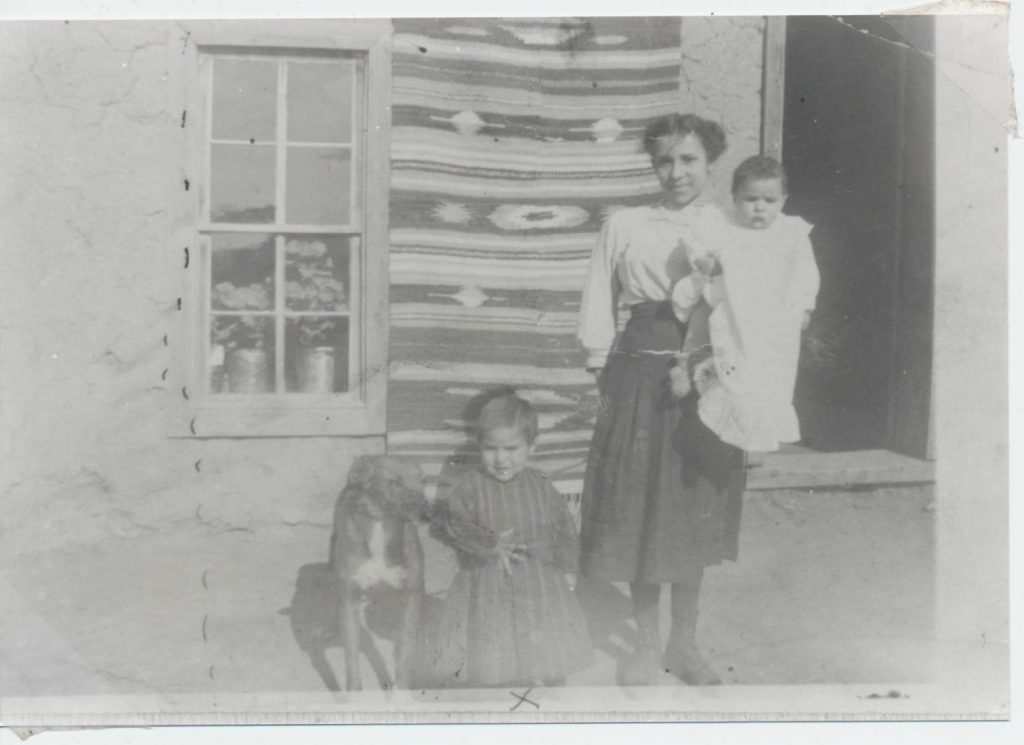
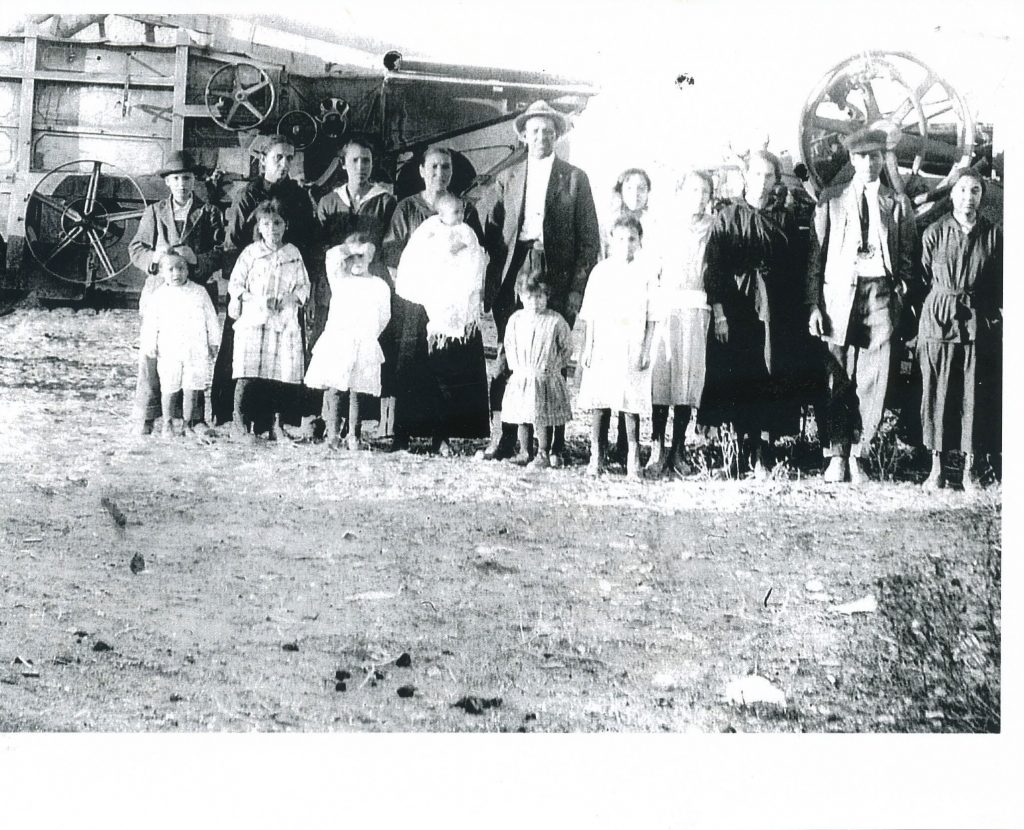
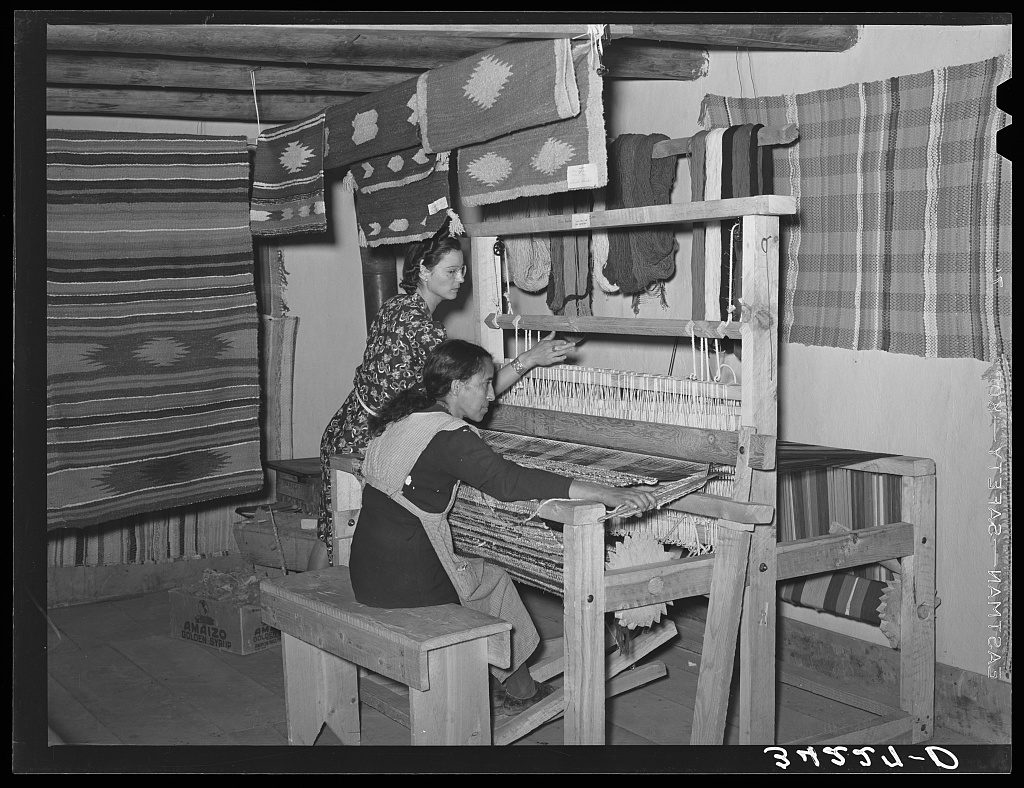

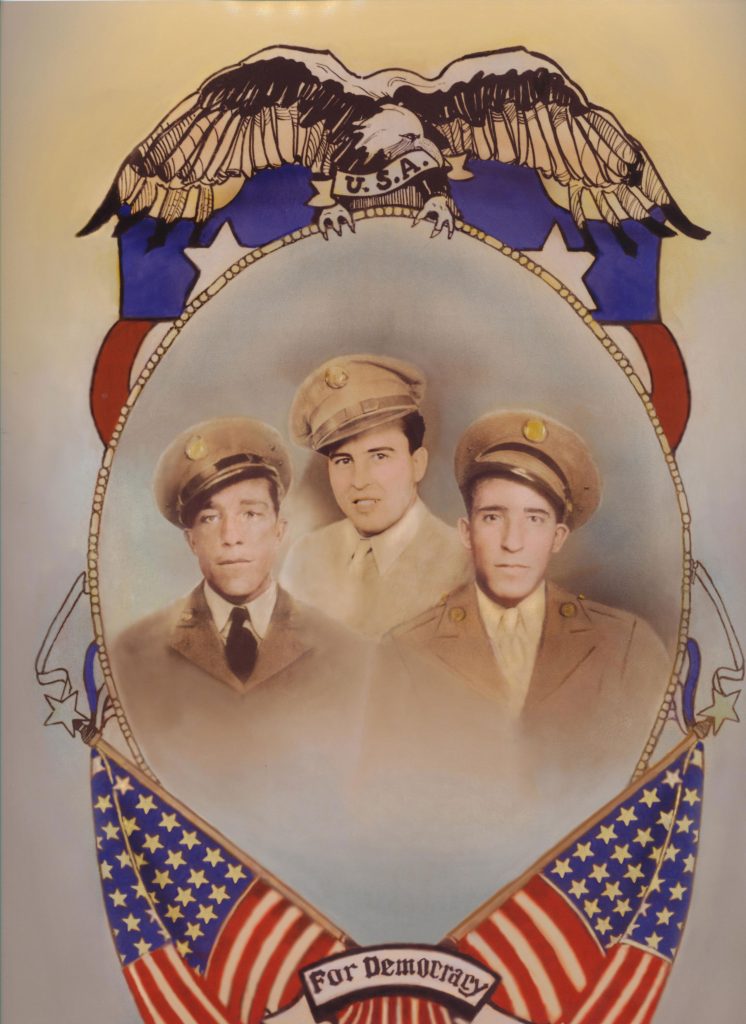

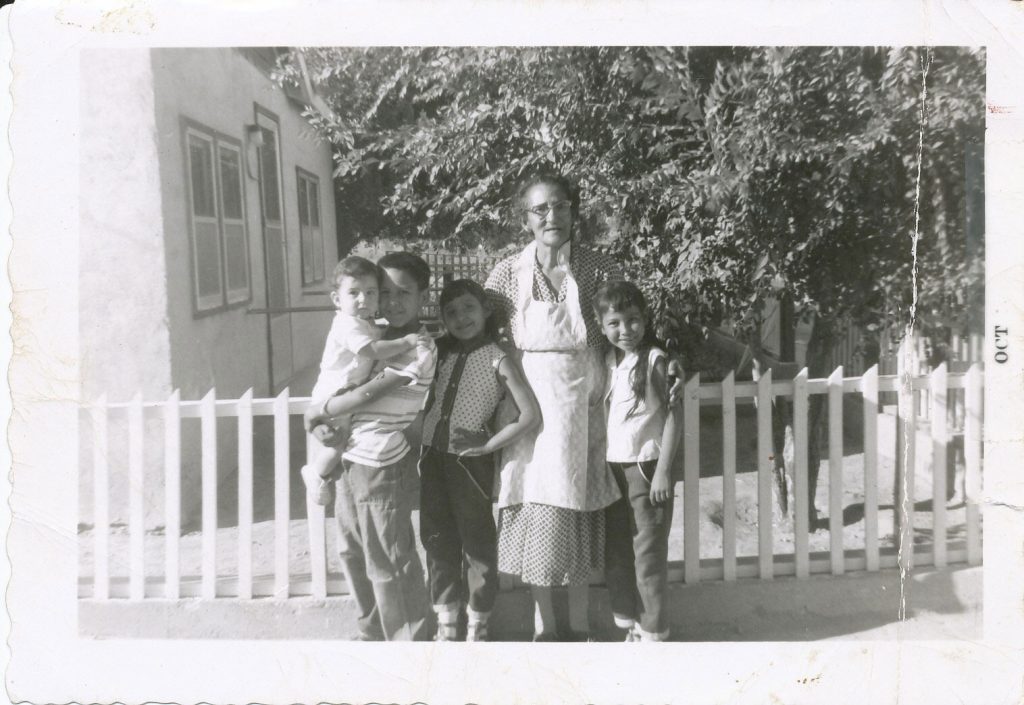
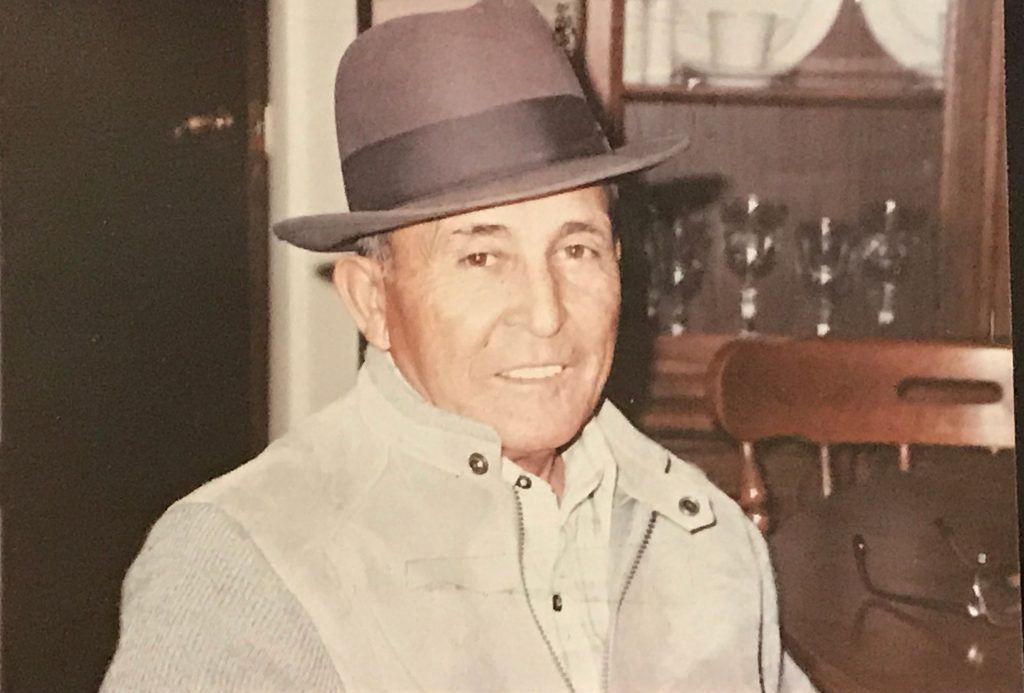
22 thoughts on “Fermin Valdez: Memories of Costilla”
Your story reminded me of stories told to me by my father. He was from Pecos and joined the Navy during WWII. He told me many of his cousins fought in the war and some of them were in the Death March of Bataan. He told me that many sons of New Mexico were killed on that March. My maternal grandma was from Arroyo Hondo. Her name is Amalia Garcia. I bet our ancestors knew each other. They were vecinos. Thanks for writing this John. And thanks for your sustained energy in sharing and preserving nuestra historia.
What a wonderful historical story of your family. Such nice photos as well. My family also came from Arroyo Hondo and Questa, but somehow went by Costilla and on to Garcia and the San Luis Valley. My parents moved to Pueblo as well and my dad also worked at the P.O.D. I was also born in 1947. Recently we find that we are 4th cousins. So, it is extra special to read this of ancestors in our family tree.
Beautiful story. I can only imagine what it was like.
Great story brother John, I remember some of what you wrote about but I am really pissed at the board members who went back on their word and denied Dad buying the property he wanted to farm in Costilla. Thinking back maybe it was for the better I think we had a great life with a whole lot more opportunities with family, friends and of course an education. It sure sounds like those folks who stayed and ran the Association were a bunch of rascals who only cared about themselves but I thank them for Dad/mom in making the decision to move and relocating in Colorado, it all worked out for us. I wonder what became of those scoundrels and their decedents. I am currently vacationing in Maui, and reflect our life growing up Dad and Mom sure did a wonderful job raising us, personally I’m glad Dad and Mom gave us new opportunities we might not have had if he had chose to remain, I carry his loyalty to God, family and country, thank you Fermin and Fabiola Valdez, love you dearly, Jose Fermin LeRoy Valdez ( I play second fiddle to my great brother John Valdez)
I sure enjoyed reading your story, John! You were lucky to get the real story of what took place in Costilla at this time in history. My father also served in the CCC. He was in the Navy stationed in Virginia. They were ready to ship him over seas when they realized he had five dependents. So, he was discharged and sent home to his family. After that we moved away to Wyoming and that’s where we stayed. Thanks, again.
What a beautiful story. I myself remember working in the bean fields with my Papi Alfirio Jacquez. Up stairs at the SPMDTU the old weaving machines were still there for a long time. My Papi had the key to open the doors when the SPMDTU members had their meetings I used to go with him to open the door . Well mostly to nosey around as many children did. I saw all the remaking stuff from the past weaving done there.
Thank you so much for these words. All though I had never heard about the beginnings of my grandpas and tios lives it gives me great peace to hear them now.
John, what a beautiful story. I sure wish I had done this with my dad, Clor Quintana, so also like your dad was taught good work ethics, and respect for family, growing up in Costilla. He did talk about the CC camps and that he did a lot of work in Utah. He also served in Germany, during the war. He never wanted to talk much about that. We do have pictures from then. We need to get together n go through them. When my mom and dad moved to Boone your uncle Manuel n tia Othela lived next door to us she was the mid- wife for my brother n my birth. I hear that when I was a baby she thought I died in her arms n she threw me on the bed, she got scared. Once we moved to Pueblo we always stayed in touch n visited them in Avondale. We loved going there every Sunday. Then can you believe that thirty some years later your brother LeRoy n you become my girls teachers n school counselor. I sure loved that, my girls loved having their cousins around them at school. During my oldest senior year she was running for school queen and she picked your brother Leroy to escort her for the school assembly. Small world. Thank you for all you do gathering such great information.
Enjoyed reading your story. My parents also moved from Northren New Mexico to Pueblo and dad worked at the Depot. Thank you for sharing.
That was a very intresting story. Great read.
I loved and kind of lived your historical story. As I read I felt that my grandpa Anastasia Vallejos and Tonita Gonzales Vallejos, my grandma lived the same life as your grandparents except for a few differences. My parents, Manuel (1904)Vigil and Felicia Vallegos Vigil (1906) we’re closer in age. My mother and older brothers told me stories about how we would travel to Pueblo so that they could work out on the fields. Their friends and neighbors were Valdez. This was sometime in 1945. One of the stories was that as a baby I was laying on the field when a rattle snake almost bit me. I don’t remember any Valdez but I’ve heard a great deal of good things about them. Looking firward to meeting you Johnny at the reunion. You did an excellent story. Thanks for sharing it.
I look forward to meeting you. Know something, only “family” know me by Johnny.
Well Prima, my [grampa] Julian was your [grama]’s brother. I recently visited with Eliu Vallejos and his son Albert (not your brother, right?) and I saw Gustavo and Roberta Vallejos at Los Dias del Año Nuevo in Amalia. My mom was Celsa Gonzales Martinez. I am still very connected to Costilla and Amalia.
What a great story! I will share it with my mother (who worked at the Ordnance Depot in Pueblo) and see if it will inspire her to outline some family stories that I can help write up.
Horale: Your words bring back memories of my Martinez Family that also migrated between Greeley, Colorado and Rainsville, NM. They worked the fields at La Junta, Swink, Rocky Ford, Manzanola, Fowler, Boone and Avondale. We had a home at Greeley and one in Rainsville where the family spent the winters working at local farms, mostly the Salman Ranch. Two of my siblings were born in Colorado. Two of us were born in New Mexico. Some of my family still live in some these places and some are buried at Rocky Ford, Pueblo and Greeley. We are Indio Hispanos who thought we were mostly Hispanic, but DNA shows otherwise. Probably Genizaro blood.
Good old days, I think? anyway Orale
How about, “Orale Primos”!
John, a great telling of your story. I will relay it to my uncle George Martinez. I am sure he can relate to much of what you talk about, including the weaving which my visabuela Marinita Casias Arellano was involved in. I know Alice Valdez and her family as well as a Bobby Lovato from Bosque Farms if you are related to that family.
Thank you my dad was born in costilla but left there at age 13 he told us stories abt costilla also
Oh my! Reading this was like I was living it, but only in my head. It brought tears to my eyes just reading about it. Thank you so very much Primo for sharing such an amazing part of your life with us. God bless.
This story brought tears to my eyes. I was a little girl when my grandmother would take me to Costilla to visit her mom and sister . My grandmother name was Maria Abeyta and her mom was Tebeca Abeyta by marriage and Tia Dubijen all from Costilla. I wish I knew more about my ancestors from Costill like this gentleman. I absolutely loved his story.